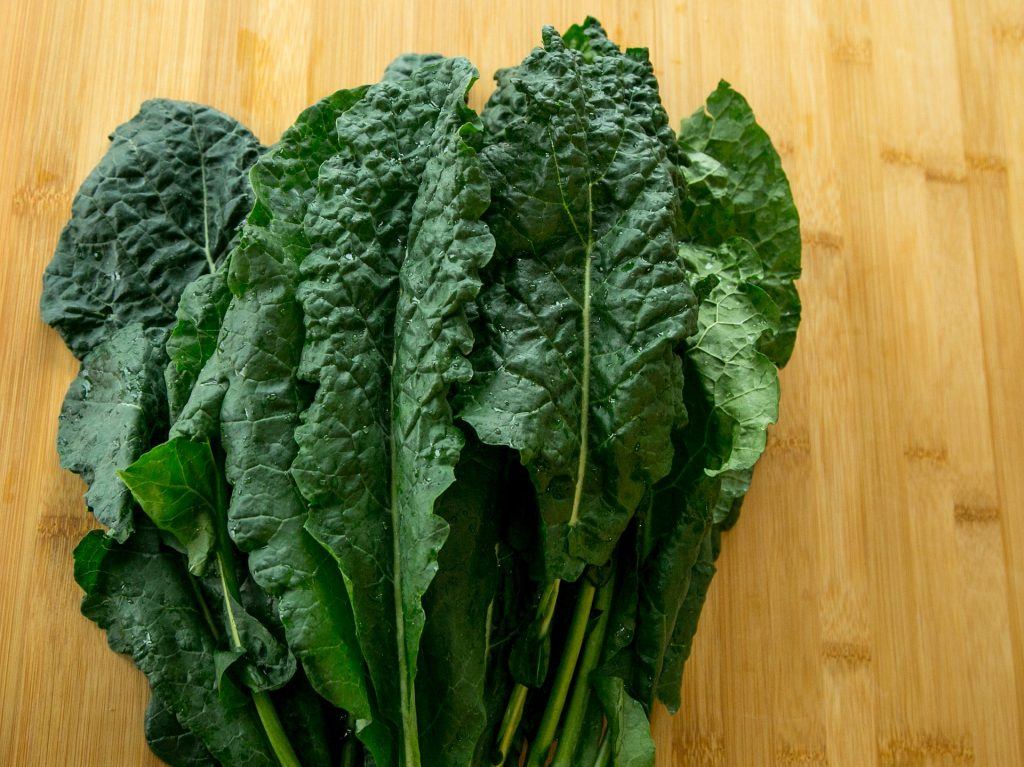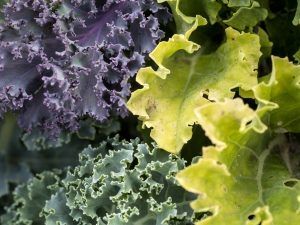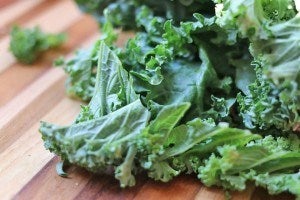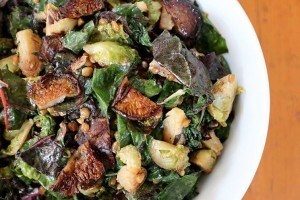
Who knew a vegetable could be so cool? Although kale has early roots in Greek and Roman culture, it remained a relatively minor commercial crop in the U.S. until recent years. This leafy green reached celebrity status around 2012, appearing on menus of Michelin star restaurants and becoming the choice ingredient of millennial food bloggers. Kale displaced other greens in salads, soups, and pesto, and even showed up in the snack aisles as chips. Bon Appétit magazine named 2012 the year of kale, and on October 2, 2013, “National Kale Day” was launched in the U.S.
While curly and lacinato (also known as dinosaur or Tuscan) are generally the most common types of kale, this vegetable comes in a wide variety—each with its own unique colors, flavors, and textures: redbor is characterized by its deep purple, curly leaves; the blue-green and purple-red leaves of red Russian are known for being semi-sweet; the large green leaves of Siberian are particularly cold weather-hardy; and Chinese kale (Gai Lan), or “Chinese broccoli,” can be used in place of conventional broccoli in many dishes. Like broccoli, kale is part of the Brassica oleracea family, which also includes cabbage, cauliflower, bok choy, collard greens, and Brussels sprouts. Another more commonly recognized name for this vegetable family is Cruciferae or cruciferous, which refers to the shape of its sprouts that resemble a cross.
Source Of
Kale and Health

Cruciferous vegetables contain a plant chemical called glucosinolates, sulfur-containing compounds that are broken down into isothiocyanates and indole-3-carbinol after chewing, chopping, or cooking. In nature, glucosinolates act as a first-line defense for plants, protecting them from environmental and biological stresses (insects, fungi, drought conditions). These same substances are being researched for their proposed ability in humans to affect chronic conditions including certain types of cancer and heart disease. Laboratory studies have shown that isothiocyanates and indole-3-carbinol inhibit inflammatory processes, prevent the growth and spread of tumor cells, and protect healthy cells. [1]
Observational studies that follow groups of people over time have sometimes suggested a protective effect of cruciferous vegetables on various cancers and cardiovascular health, but findings have not been consistent. [2-5] There are several possible reasons for this discrepancy. The use of different study designs and methods, as well as the way in which the vegetables were cooked can change the bioavailability of isothiocyanates and their effects on the disease process. Genes may also play a role, as some people metabolize isothiocyanates more efficiently than others. [2] It is also possible that the amounts of cruciferous vegetables consumed by study populations have no important impact on disease risks. More research with larger and longer-term studies is needed.
Regardless, kale remains a highly nutritious food to include as part of a healthful dietary pattern. The 2015-2020 Dietary Guidelines for Americans recommend that adults eat a variety of vegetables as part of a healthy meal plan, and specifically at least 1½ cups of dark-green vegetables (including cruciferous) per week. [6]
People who are placed on blood thinners or anticoagulant medication to prevent blood clots are sometimes concerned about eating kale and other green leafy vegetables that are rich in vitamin K. Vitamin K has a unique action that assists in clotting blood, and can interfere with the effects of some blood thinners. However, people taking these medicines can safely eat these vegetables with a general precaution: eating a relatively consistent amount from day to day can allow one’s physician to adjust the dose of medication to balance the dietary intake of vitamin K, and should not interfere with the anticoagulant medication’s effectiveness. For those who are on blood thinners or anticoagulant medications, it would be wise to check with their physician and possibly a clinical dietitian.
Another concern has been the goitrogen content of kale and other cruciferous vegetables. Goitrogens are naturally occurring substances, sometimes referred to as “anti-nutrients,” that can block iodine from entering the thyroid gland. Iodine is a trace mineral needed by the body to make thyroid hormones that promote normal metabolism. A deficiency of iodine can lead to a condition called goiter, or enlargement of the thyroid. Healthy persons who eat enough iodine and metabolize iodine normally will not be affected by dietary goitrogens. However, if one has an underactive thyroid called hypothyroidism and cannot produce enough thyroid hormone, eating excess goitrogens, especially in raw form, may further suppress thyroid activity and increase the risk of goiter. Those who have hypothyroidism specifically due to an iodine deficiency are at greatest risk. A simple solution is to cook cruciferous vegetables, which deactivates the enzyme responsible for causing the goitrogenic effect. [7] Including a wide variety of vegetables each week other than cruciferous will also protect against eating an excess amount of goitrogens.
Prepare 
- Available throughout much of the year, Kale is even tolerant to frost and cold weather. Low temperatures can actually cause kale and other cruciferous vegetables to convert starch molecules into sugar, resulting in a sweeter, less bitter flavor.
- Despite their tough and fibrous texture, kale stems are edible if cooked.
- Cut stems into small pieces and add to a stir-fry.
- Add diced stems to soups.
- Use to make a vegetable stock.
Make
Kale has hearty leaves that withstand all types of cooking: boiling, braising, steaming, microwaving, and stir-frying. Kale can also be served raw but the texture may be difficult to chew.
- Sautéed Kale: This is one of the simplest, quickest methods to enjoy kale. Add 2-3 tablespoons of olive oil to a saucepan on medium-high heat. Add 2 cloves of minced garlic and cook for 1-2 minutes until softened. Add ½ cup water or broth and 1 – 1½ pounds kale (washed, stems and leaves coarsely chopped). Cover the pan and allow to cook for 5 minutes until kale is softened and at desired texture. Season with herbs and spices as desired.
- Kale Chips: Preheat oven to 350 degrees F. Line a baking sheet with parchment paper. Wash and dry 1 bunch of kale thoroughly; use paper towels to blot if needed. Using your hands, pull leaves from their stems and rip into small pieces; or you may use kitchen shears to cut leaves from stem and into small pieces. Place into a large bowl and drizzle with oil. Massage oil evenly into kale pieces. Spread in single layer on baking sheet. Sprinkle herbs or spices as desired (try curry, cumin, garlic powder, onion powder, smoked paprika, nutritional yeast, or chili powder). Bake until the leaves shrink and the edges turn slightly brown, about 15 minutes.
- Kale Pesto: This recipe uses walnuts instead of the classic but more expensive and obscure ingredient of pine nuts. Place into a food processor: 2 cups kale leaves (stems removed), ¼ cup extra virgin olive oil, and 2 cloves garlic or ¼ teaspoon garlic powder; pulse until smooth. Add ¼ cup toasted walnuts, and pulse until blended. Add ½ cup Parmesan cheese and pulse again until blended. Serve pesto mixed into pasta or whole grains, as a sauce for chicken or fish, as a pizza sauce, or spread on crackers.
- Kale Salad: If using in a salad, there are two methods to soften the leaves so they are easier to chew: 1) Place leaves in a bowl and drizzle with olive oil; massage the leaves for 1-2 minutes, or 2) Blanch leaves by placing in a pot of boiling water for 1 minute. Drain the leaves and place into a bowl filled with ice water to quickly stop the cooking. Place leaves in a colander and gently press out excess water. Use paper towels to blot dry as needed. Blanching can also help to remove some of the bitter flavor from kale.
More recipe ideas and serving suggestions featuring kale:
- Add kale leaves to soups, stews, and casseroles at the start of cooking.
- Add a few handfuls of chopped kale into a burger mixture before cooking.
- Use large hardy lacinato kale leaves as a wrap to replace bread or tortillas.
- Add a handful of kale leaves to smoothies.
- Kale with Carmelized Onions
- Three-Green & Wheat Berry Salad with Mushroom “Bacon”
- Garlic-Braised Greens
- White Bean and Kale Hummus
Did You Know?
- Prior to its dramatic rise to popularity in edible form, kale leaves were most commonly used in restaurants as decorative garnishes.
- Some types of kale offer white, lavender, blue, pink, or purple leaves that are used in floral bouquets.
- Thomas Jefferson was a kale aficionado, growing and recording several varieties of kale in his garden at Monticello in the early 1800s.


